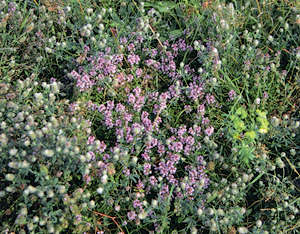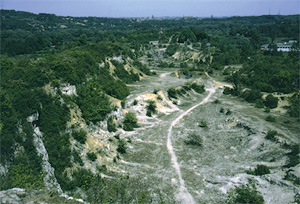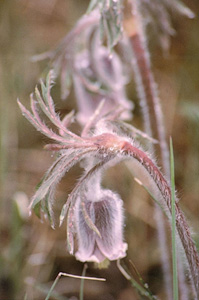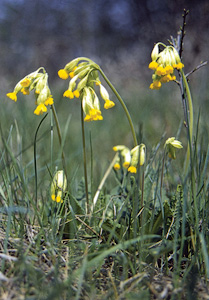|
Owing to its specific geographical situation, Krakow is a city with very diversified landscape. The range of this diversity includes the picturesque valley of the Vistula, the sub-mountain features of the southern part of the city, and the Jurassic landscape in its western part. The geological structure and rock substrate of the Jurassic upland support a number of valuable plant communities, including thermophilous vegetation on rocks, as well as xerothermic scrub and swards. These natural features are protected in the Jurassic Landscape Parks Complex, which includes some sites within Krakow's administrative borders.

|
|
phot. January Weiner
|
1. Xerothermic swards within the city's limits
Xerothermic swards and shrub communities can be found on limestone hills, chiefly in the western part of the city. Among the best researched and valuable sites the following should be listed: the Bodzów quarry, Tyniec quarry, and groups of rocks: including the Przegorzalskie, Bielańskie, Twardowskiego, Skołczanka and Krzemionki sites. Many of these sites are located close to quarries where limestone was once extracted.
Xerothermic swards are under protection in some nature reserves in Krakow. The value of the swards is not only implied by the valuable species of plants and animals associated with these communities, but also by the attractive landscape resulting from their characteristic locations. The protection of the landscape features is provided by parks, for example, by the Bielańsko - Tyniecki Landscape Park.

|
|
The Bodzów quarry;
phot. January Weiner
|
2. Characteristic features of swards
The sward communities occur on the southern slopes of limestone rocks. The local conditions provide alkaline substrate and high temperatures on sunny days - which can reach as much as 50° C! Therefore, the swards support thermophilous species, typical of climatic zones in the south of Europe.
3. Valuable species of sward communities
The swards provide habitats for rare and threatened plants (e.g. carline thistle, small pasque flower, and primrose). Other species occurring in their compact patches, may not be protected species themselves, but nevertheless are fodder plants for protected animal species. One such example is thyme - a fodder plant for large blue, a very rare butterfly species, placed under legal protection in Poland and throughout the European Union, but which became extinct in the area of Kraków in the 1950s.

|
|
Small pasque flower;
phot. Aleksandra Pępkowska
[+]
|

|
|
Primrose;
fot. January Weiner
|
Another butterfly species associated with swards is a critically endangered English dryad, listed in the Polish Red Book of Animal Species, which has its only station in Poland in the Skołczanka reserve.
4. Threats and active protection measures
Swards are semi-natural habitats which owe their presence to human farming practices. The plan for protection has to include active methods, like cutting the grass or having stock animals grazing there. Otherwise, the sward habitats will undergo the process of ecological succession transforming them into forest sites. Particularly harmful to the prospects of swards conservation could be ill-conceived afforestation projects, that ignore the characteristics of the habitats concerned.
In Kraków there is also an additional threat to these areas brought about by people visiting them for recreational purposes. The adverse effects include littering and outright destruction of swards by cyclists or motorbikers who often use the slopes of hills as routes for downhill trials.
The need for active protection of swards is best exemplified in the Bielańskie Skałki nature reserve. The cessation of farming management (grazing, cutting) has brought about the disappearance of the most valuable sward species. Therefore the present plan for protection aims to protect the on-going process of succession i.e. the sequence of plant communities, in this case leading to the emergence of forest-type systems in former sward habitat.
5. Protection of swards in Kraków
Xerothermic swards are plant communities covered by legal protection, and are listed as such in the Regulation of the Minister for Environment concerning the types of habitats subject to protection. The sward communities occur in three reserves within the city limits of Krakow: Skołczanka, Bielańskie Skałki and Skałki Przegorzalskie. In the Skołczanka reserve, a special programme of active protection measures covers open habitats, including the xerothermic swards. The main object of protection in this particular reserve is insect fauna dwelling in the various habitats there. This fauna includes more than 500 butterfly species recorded in the area. On the other hand, the Skałki Przegorzalskie reserve is a floristic reserve, protecting rocks with xeroothermic vegetation and thermophilous shrub.
Written by: Joanna Kudłek, Aleksandra Pępkowska and January Weiner
|

